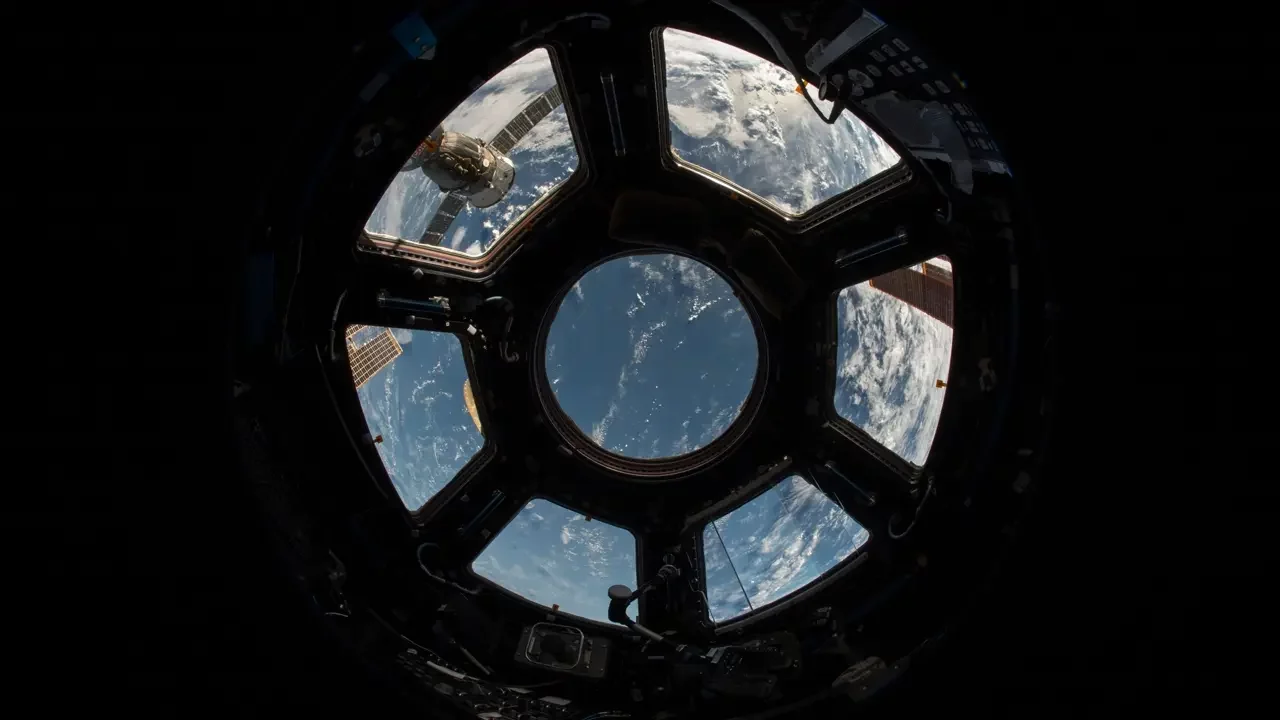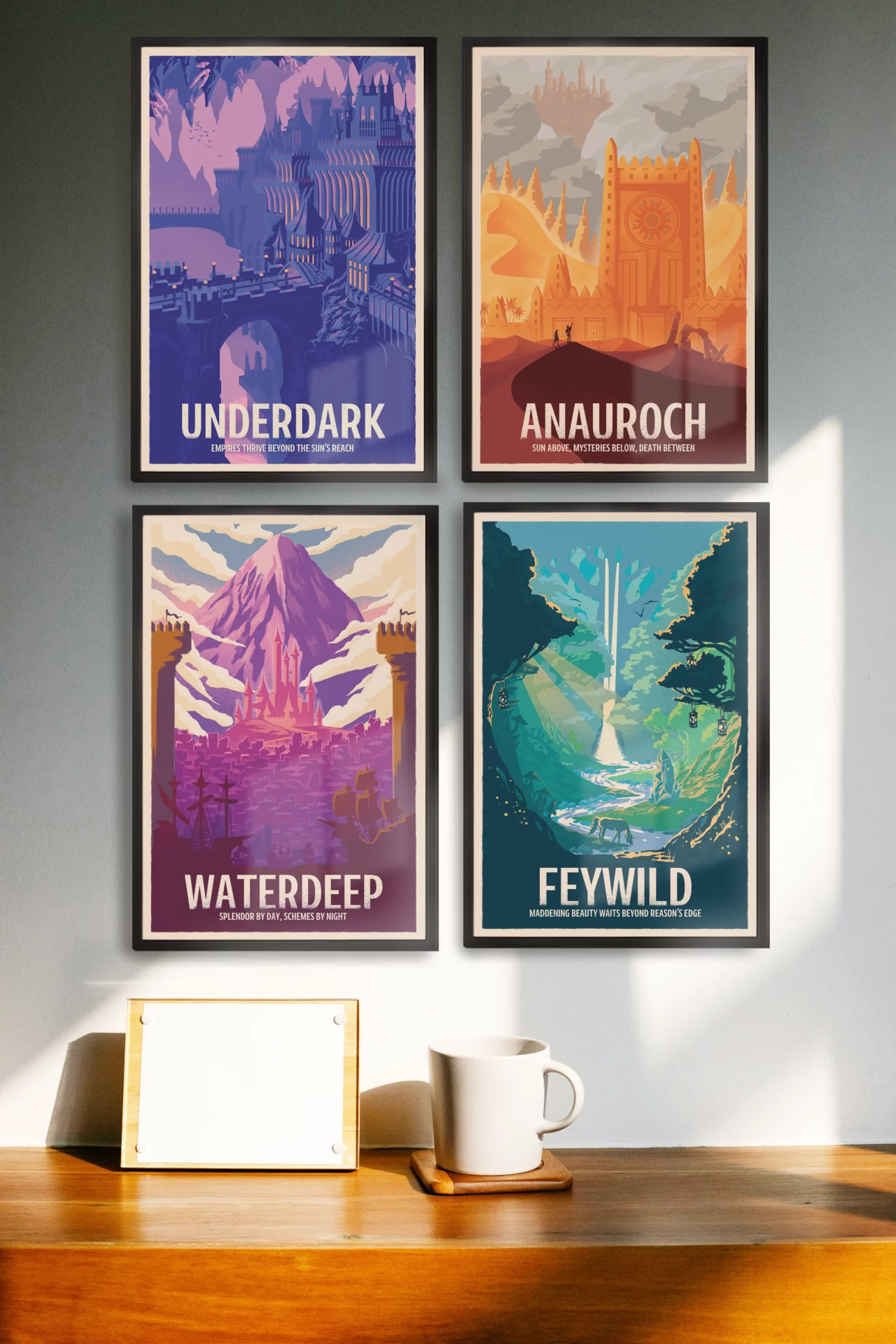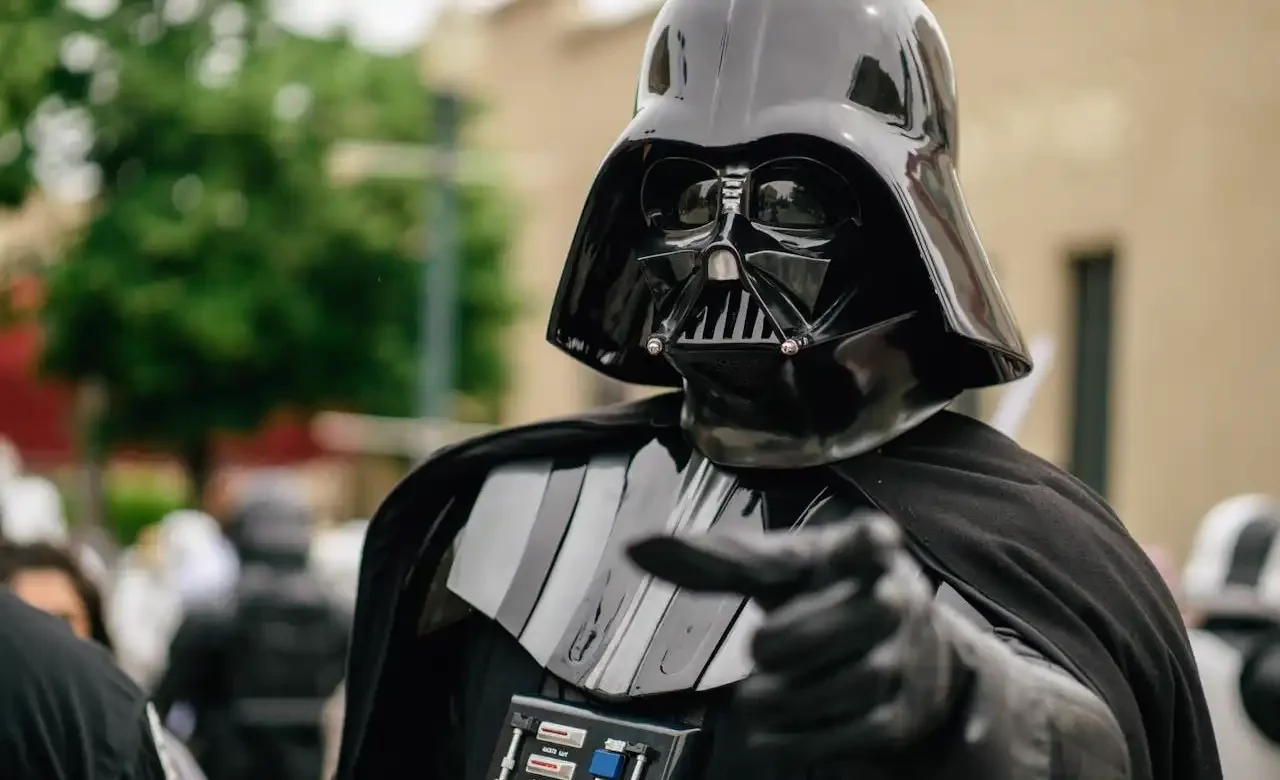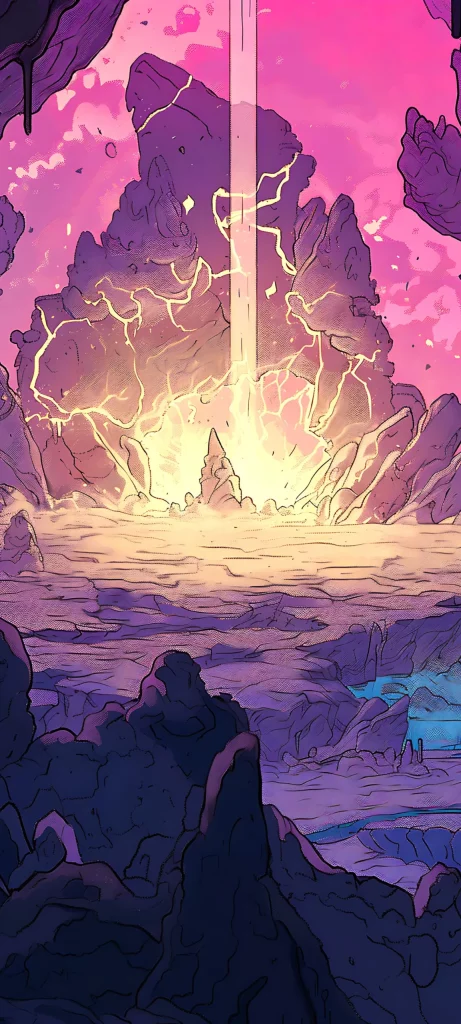
Creativity makes people unique. However, in a world that values money more than expression and art, taking the time to be creative is not often encouraged. Some people think originality doesn’t exist. But creativity will never disappear, and that’s awesome. It’s a foundation for culture; it makes people healthier, happier, and–importantly–have more fun!
The End of Creativity?
![pexels-shvetsa-4587991 A photo of a person blocking a french bulldog's mouth with their pointer finger. Illustrates [alt text].](https://www.michaelghelfistudios.com/wp-content/uploads/2025/02/pexels-shvetsa-4587991.webp)
Originality doesn’t exist any more.
This sophist argument points out people have been telling stories for at least 100,000 years; surely then, we can only repeat ideas now. An extreme example is Joseph Campbell believing there was just one great story—the monomyth—in the world. Similarly, music has only 12—or 72—notes; and art has only 11 basic colours—in English, some languages have 12. Russian and Italian, for example, separate blue into light and dark blues. Considering all these limits, the argument says, creativity must have a limit, too.
So, originality is dead then.
In Defence of Originality
![min-maxing-downsides A black and white photo of a man wearing plate armor while charing for an attack with a sword and shield. Illustrates [alt text].](https://www.michaelghelfistudios.com/wp-content/uploads/2025/01/min-maxing-downsides.webp)
There are, in fact, many more stories in the world. Campbell completely ignored works outside Indo-European myths and Western story structures.
For instance, one East Asian story tradition—kishoutenketsu (起承転結) the Japanese term for this structure—has no focus on conflict, and slice-of-life manga is a thriving market today. Likewise, many Buddhist, and similarly inspired stories, focus on balance and restoration, not victory. These are also often nonlinear and include cycles.
Elsewhere, Ubuntu philosophy has many stories that focus on community action, not an individual hero. These, too, often finish with restoration, not destruction. Dreamtime stories from Australian Aboriginal traditions are another example. These are nonlinear, timeless, and the “plot” is usually something that happens inside the listener’s mind, the meaning coming from their own reflections as they listen.
In music, there may be a set number of notes, but there is no limit on pitch. Additionally, artists, bands, and composers have been quietly using microtonality to find more and more ways to express emotion; adding more frets to a guitar is just one example of expanding old limits. Technology has even reached the point where one talented person can create whole soundtracks from their home studio!
In art, there is a chance people are still finding new colours.
Hollywood has its guidebooks; big companies–studios, publishers, record labels–might prefer to recycle material than risk trying something new; however, there are always people in the world creating new things. And for the record, AI will always be behind these people, never leading them.

People See the World Differently

There is also the fact humans are a messy mix of over 30 trillion cells. Not even considering the effects differences in location, upbringing, and education. have on a person’s perspective of the world, some people simply see things very differently.
Richard Feynman (1918–1988) was a bright student who loved math. For a long time, Feynman thought the "colours" of equations were beautiful. Unbeknownst to him at the time, he probably had a type of synaesthesia. Some synaesthetes have said they used to think places like concert halls dimmed their lights so audiences could see the music’s colours better. People can go a long time without realising they are experiencing the world very, very differently.
Feynman would go on to win a Nobel prize in physics, pioneer quantum computing, and introduce the idea of nanotechnology. This isn’t to say synaesthesia helped him do those things, but it certainly didn’t stop him becoming one of the greatest physicists of all time. Experiencing the world differently can give ideas other people haven’t thought of. Now, consider everyone is experiencing the world differently.
The Basics of Creativity
![pexels-shvets-production-7203722 A photo of the word "idea" coming out of a box labeled "brain". Illustrates [alt text].](https://www.michaelghelfistudios.com/wp-content/uploads/2025/02/pexels-shvets-production-7203722.webp)
This means different things will work for different people. However, it’s worth noting very few people create something from nothing. For a new idea, many people choose a goal or find a problem, look at the limits, and then find a solution. Usually there is a lot of frustration and failure along the way. It’s often the determination to never quit that helps originality happen.
Steve Wozniak is a brilliant example of this. As co-founder of Apple and the pioneer of some of the most important early hardware, he said, "I built things that I needed and that I wanted. If nobody had done it, I did it."
Just because it hasn’t been done, doesn’t mean it shouldn’t be done—sometimes, anyways. Mix determination with an understanding of which limits are important, and which people can break. Breaking old rules and ideas is a major source of originality. Grace Hopper built the first compiler for computers, giving people the ability to understand machine code. A pioneer of computer science, she said, "The most dangerous phrase in the language is, 'We've always done it this way.'"
Artists and Creativity

However, solving physical problems is for scientists and engineers. Artists face a slightly different challenge—how to express emotions with ideas. A Minecraft Movie combines hope with friendship and never giving up. Dune combines dread with power, its consequences, fate and free will, and the dangers of trusting leaders with great charisma.
Choosing which is first—the emotions or the ideas—will depend on the creator. What’s more important is that artists avoid focusing too much on one and forget the other. Art made only with ideas or unclear on its emotion will struggle to engage its audience; however, art that is all emotion may be too messy to understand or forgotten quickly. Emotions grab the audience; ideas give art its staying power.
Taking Old Inspiration for New Originality

This is the most common approach to develop creativity, and there are a number of ways to do this.
Take a theme or genre, and mix it with another. For instance, Star Wars is fantasy knights and wizards set in space. However, have good reasons for the mix. Lucas wrote Star Wars because he wanted to make myths popular again–therefore knights and wizards–and nobody else was doing fun sci-fi at the time–so in space.
Themes can also make each other stronger. Trench Crusade combines knights and the horror of fighting demons in the real world hell of a World War One setting.
Similarly, Deadlands adds to the myth of gunslingers with the myths of the supernatural. The Old West’s lonely towns and deserted locations are perfect places for horror. The other advantage of combining like this means your potential audience is bigger—fans of the Old West and supernatural horror lovers can play Deadlands together.
Creativity with Perspective
![mammal-3218712_640 A composite photo of three giant elephants. Illustrates [alt text].](https://www.michaelghelfistudios.com/wp-content/uploads/2025/02/mammal-3218712_640.webp)
Another approach is to change the normal perspective. A different perspective can add detail and deeper meaning to something familiar. Wicked shows The Wizard of Oz’s Wicked Witch of the West’s viewpoint; this makes her a stronger, deeper character than the old story allowed.
A different perspective can also show problems with the usual viewpoint. In the video game This War of Mine, players aren’t soldiers in a warzone, like in so many games; instead, they’re controlling refugees just trying to survive. The power fantasy is gone. Instead, players are in a game about difficult choices in a world with no correct answers.
Changing the Themes for Greater Effect

Some creatives take an older work of art and make a change so powerful it becomes something new. When Johnny Cash asked Trent Reznor if he could cover the Nine Inch Nail’s song “Hurt,” Reznor didn’t think it would be a good match for a country singer. When he saw the new music video for the first time, he said, “Tears welled up… Wow. I just lost my girlfriend, because that song isn’t mine anymore.” Cash turned the nihilism of the original into a last reflection on the life of a dying man.
Using Cognitive Dissonance
![pexels-enginakyurt-1559192 A photograph of a performance artist underwater in a tank. Illustrates [alt text].](https://www.michaelghelfistudios.com/wp-content/uploads/2025/02/pexels-enginakyurt-1559192.webp)
A quick note on using this. Modern media loves it; it’s Mr. Blonde torturing a policeman to the upbeat song “Stuck in the Middle with You” in Reservoir Dogs; it’s the beautiful “Ave Maria” combining with the violence of the Hitman series. The audience feels two opposite emotions, or an emotion fighting an idea, and they must choose how to react.
But no one enjoys cognitive dissonance for long—it causes real discomfort. Therefore, artists save it for key scenes in films, moments in songs, etc. Short and sharp works best.
Creativity from Limits
![NoEntry.pixabay.panel-2091780_1280 A street sign showing a hand grabbing a rectangle. Illustrates [alt text].](https://www.michaelghelfistudios.com/wp-content/uploads/2025/01/NoEntry.pixabay.panel-2091780_1280.webp)
Some artists work best with limits. One example is a painter who chooses to use only a couple of colours. By limiting the palette, the artist often has to be more creative in expressing their vision.
Sometimes, these limits do not come only from choice. Horace, a love letter to games of the 1980s and early 90s, remixes classical music in chiptune. The game’s themes are memory, history, and evolution so in a sense, it’s perfect. However, Mozart, Bach, and Beethoven are also all public domain. This gives the extra bonus of making the game a lot cheaper to make. Often creators have limited time, money, or energy; these will affect a project as much as any inspiration.
Found-footage films like The Blair Witch Project and Cloverfield are another example of choosing limits to fit a theme. Both show the entire film from a single, hand-held camera. They partly do this–with varying success–to create tension, horror, and a sense of realism. However, they are also warnings to choose limits carefully. Moments come when keeping a camera recording and carefully aimed are so unlikely, it destroys their immersion.
The Risk of Being Really Different
![labrador-retriever-2418176_640 A phot of a black Labrador looking outside of the window. Illustrates [alt text].](https://www.michaelghelfistudios.com/wp-content/uploads/2025/02/labrador-retriever-2418176_640.webp)
In 2000, Mark Z. Danielewski wrote House of Leaves. With themes of perception versus reality, obsession, fear, and the unknown, it is a cult classic. The story experiments with different sources, footnotes, and typography; it revived interest in experimental fiction. Translated into multiple languages, its success is still strong, and many universities use it as an important text on postmodernism.
In 2006, he wrote another book called Only Revolutions. The story is about two characters, Sam and Hailey. The reader is meant to read eight pages from Sam’s perspective, then flip to the back of the book to read Hailey’s; the reader keeps flipping back and forth every eight pages. Although some people love it, Only Revolutions was never as popular as House of Leaves. Danielewski may have achieved what he wanted with the book. However, it’s worth remembering being too different will limit who finds the artwork engaging.
Ways to Boost Creativity
![pexels-aurelijus-u-2148621102-30711884 A photo of carefully positioned coins that mimick a growth graph from the stock market. Illustrates [alt text].](https://www.michaelghelfistudios.com/wp-content/uploads/2025/02/pexels-aurelijus-u-2148621102-30711884.webp)
Make a dedicated workspace. Silence may not be helpful—it actually distracts some people.
This is why many writers work in quiet cafes to write. Low background noise keeps many minds happy. Also, creators should probably avoid perfectly clean and organised spaces. Studies show some mess often encourages people’s brains to make unusual connections–what’s in the clutter isn’t important, it just puts the brain in creative mode. This is partly why mood boards and similarly styled reference boards work so well; these also come with the added bonus of giving accurate reference material to the project.
When looking at the limits, consider every visual, audio, and tactile part available, even the stuff people usually use without thinking. Only Revolutions wasn’t a massive success, but Danielewski decided to challenge the basics of reading because it helped his themes. Jack White has said his biggest inspiration was a song called “Grinnin’ in Your Face” by Son House. White said the song taught him emotion was the most important thing in music, more than any skill or technical accuracy, "It didn't matter that he was clapping off-time, it didn't matter there was no instruments being played. All that mattered was the attitude."
Inspiration for Creativity Is Everywhere

Music, books, film, art, history. Look for inspiration everywhere.
Cowboys and zombies might not seem an obvious combination, but Deadlands makes it feel natural. Additionally, some people find certain artwork puts them in a creative mood—the brain links experiencing the artwork with being creative, so it becomes a real source of inspiration.
Stephen King wrote with Metallica and AC/DC playing in the background; David Lynch looked at Francis Bacon paintings; Andrei Tarkovsky made sure he always had family photos nearby.

Lovers of the Forgotten Realms may find these pieces inspirational. Created for MGS’s very own RPG store by American artist Dredge, they also work for those who just want a cool bit of art on their wall! As long as the art has some meaning for the creator, or it puts their brain in creative mode, anything can be a trigger.
Boredom Boosts Creativity

Artists shouldn’t be afraid of boredom. Putting the phone away helps the active part of the brain relax, leaving the subconscious free to generate ideas. It’s why so many great ideas happen in the shower. Activities that occupy the body, but let the brain zone out are perfect. It’s one of the reasons why artists often take simple, physical jobs—though the extra money is nice, too.
When he hit a problem in his stories, Graham Greene would take his dog for a walk. He found the light exercise was enough to let his subconscious find the answers he wanted.
There is a dedicated article on creative block here, but one important thing to remember is it's doing a job. During his free online course, Brandon Sanderson says writer’s block—though the same goes for any artist—is the subconscious saying there’s a problem that needs fixing. To do so, it needs time, and perhaps new inspiration. Don’t fear the block; let it solve itself naturally.
Don't Focus for Too Long on One Thing
![pexels-freestocks-688961 A photo of a French Bulldog eagerly eyeing a bowl of snacks. Illustrates [alt text].](https://www.michaelghelfistudios.com/wp-content/uploads/2025/02/pexels-freestocks-688961.webp)
Give areas in a project time to rest. Once artists finish a section, they should take a break or work on something else. Leave it for a day or a week. When they come back to it, they will see it with fresh eyes—errors and improvements will suddenly be much easier to see.
Creativity Is a Routine

The artist needs to find the routine that suits them best. Sanderson, in the same series, encourages writers that have found what works to stay in that routine and keep production consistent. This is common advice—creativity is a habit.
Toni Morrison, winner of the Pulitzer Prize and Nobel Prize for Literature, did much of her early writing while raising children and working a full-time job. She said, "I wrote in the mornings before the sun came up. I had to. I had very little time. If I waited for inspiration, I wouldn’t have written a word."
Fight for Creative Happiness

One final truth is that not everyone feels the need to express their creativity. If someone does realise they have that need, then finding what works to make that expression happen is essential.
One more piece of advice from Morrison, “I tell my students one of the most important things they need to know is when they are at their best—their most creative and productive—and to guard that time with their lives.”
Different people see the world in different ways; different ways of working suit different kinds of people. They need to experiment, find what works, and when they do find a way to do what they love, they should guard that process with their life.
Good luck!



